MOTORNET: A Bit Of Swagger
A bit of swagger
SCOOP MOTORNET with Karl Ferguson
Images by Neil Mackenzie - onlinefotos.com/neil
Rightly or wrongly, Jaguar’s are often seen as stately, even genteel cars – cars that convey their passengers in comfort and silence, cosseted, removed even from the real world. It’s the smoking jacket effect, lingering on even in the face of some modern and technologically advanced product.
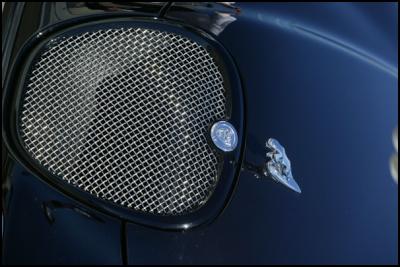
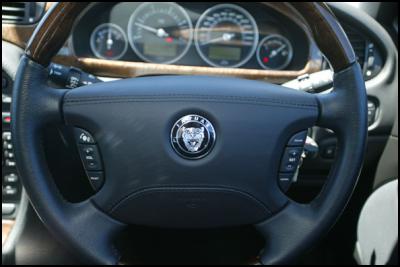
Which is why the facelifted S-Type Sport is such a breath of fresh air. With a subtle but distinctive body-kit and a mesh grille at the nose that suggests more than a degree of menace, the Sport has a considerable air of swagger about it. London ‘gangsta’ swagger that is.
The current S-type is no spring chicken having been launched to our shores way back in 1999. In fact, pictures of its likely prototype replacement have already been published and it would be fair to say, the new car from a styling perspective is world’s apart. Given this, you might think the sight of a Jag S Type tooling through Wellington on a busy Friday afternoon would attract about as much interest as a backbench MP sipping a latte. Wrong. This car – admittedly in jet black – is a genuine head turner. And while the much scraped front skirts may have a degree of impracticality, this car is a head turner for good reason.
Neither are the changes to the Jag just skin deep. Residing under the bonnet is a first for Jaguar… that’s right, a diesel. As it turns out though, it’s quite a familiar diesel powerplant. In fact, it’s the same engine that Ford collaborated with PSA on and which also resides not only in the Land River Discovery 3 but also in the Peugeot 407 coupe and sedan. It’s a good one too.
Those of you who like a bit of Top Gear might recall that Jeremy Clarkson drove this particular model Jag around the infamous Nurburgring racetrack in fractionally under ten minutes, hounded on all the while by the pretty but officious Sabine, who then knocked nearly a minute off his time in her first stint behind the wheel of the oil-burning Jag. The point is that this S-Type is no slouch.

Click for big version
With a displacement of 2.7 litres backed up by not one but two turbo chargers, the V6 diesel delivers a solid 153 kW and 440 Nm of torque. Like pretty much all diesels, most of the power delivery comes in the middle of the torque range – between 2000-4000 rpm – but the turbos do an excellent job of helping provide a linear power curve meaning you don’t have to unnecessarily rev the engine. And it is a great engine. But beware of that redline. The power is so addictive it’s almost impossible not to constantly seek more, and given this motor is all in at 4500 rpm its not hard to hit its limits, even when you feel like you’re just getting started. And despite the twin turbos, dropping a cog will generally drop you out of the power band. While the on-paper 0-100km/h time of 8.1 seconds doesn’t immediately impress, in real world driving you can still leave muscle cars in your wake. Always satisfying, it’s doubly so when you’re driving a diesel – and a Jaguar to boot.
Alas, the Jag’s traditional J-gate set up, even with an excellent ZF six speed as standard, is showing its age. It’s difficult to know which gear you’re manually changing too, which means effectively leaving it in auto only. The J-gate may be considered iconic, but the Peugeot 407 coupe with its six speed auto is a demonstration of how a modern transmission should work, and the Jag is handicapped by its traditions in this case.

Click for big version
Nevertheless, the Jag still manages to impress. On the road it feels both purposeful and solid. It’s a particularly stable car at high speed too (no doubt thanks in part to the sport suspension and lower ride) which is welcome and despite its 1800kg mass, makes a good fist of going around corners, with the electronic aids only interfering sparingly. It might not be first choice for a rally type sprint through the backblocks of New Zealand, but for a roadtrip with a cruising focus, but desirous of sustained pace, the Jag would be perfect. Neither will it break the bank in the refueling department. It still likes to drink (what Jag doesn’t?) but it no longer embarrasses it-self at the pumps, consuming diesel in a very civilized manner indeed at around 8.3 litres per 100 km on combined cycle.
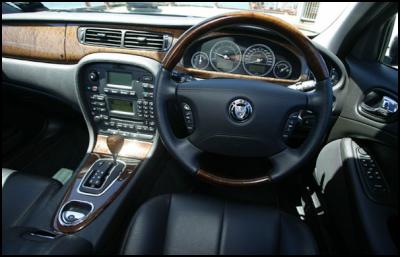
Click for big version
It delivers too in the creature comfort department. Sumptuous leather upholstery is standard as you might expect, as are electrics, climate air, a myriad of safety enhancements and park distance control. One thing that did surprise was the particularly poor radio reception. It seems to be a feature of built in aerials – they may be more practical than their predecessors but I am not convinced they work as well. The leaping Jaguar statuette makes a return to the bonnet, though in my case it was somewhat temporarily. Someone took a fancy to it while the S-Type was parked on the street one night and that was the last I saw of it.
The really good news is that – for a Jaguar – the S-Type diesel is almost affordable. At a fraction under $100k for the standard model, and just under $110 for the Sport, the S-Type makes a fairly strong ‘value for money’ argument in the luxury car segment. Even better, you can hand on heart lay claim to environmental leanings when the inevitable climate change conversation crops up at dinner parties. Who would have thought a few years ago a Jaguar could achieve that?
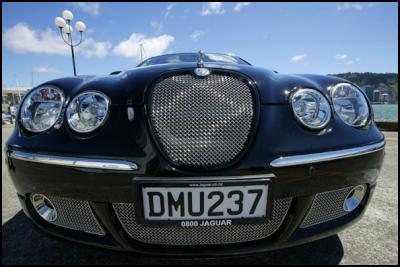
Click for big version
ENDS



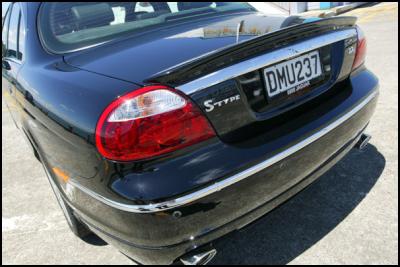
 Binoy Kampmark: Fencing The Ocean - Australia’s Social Media Safety Bill
Binoy Kampmark: Fencing The Ocean - Australia’s Social Media Safety Bill Binoy Kampmark: Trump, AUKUS And Australia’s Dim Servitors
Binoy Kampmark: Trump, AUKUS And Australia’s Dim Servitors Peter Dunne: Dunne's Weekly - The Wrong Answer To A Question That Does Not Exist
Peter Dunne: Dunne's Weekly - The Wrong Answer To A Question That Does Not Exist Martin LeFevre - Meditations: Perception, Conception And Beauty
Martin LeFevre - Meditations: Perception, Conception And Beauty Alastair Thompson: On The Publication Of The First NCQG Text 'New Collective Quantified Goal On Climate Finance'
Alastair Thompson: On The Publication Of The First NCQG Text 'New Collective Quantified Goal On Climate Finance' Ramzy Baroud: A Nation In Denial - Why Israel’s Defeat Is Imminent
Ramzy Baroud: A Nation In Denial - Why Israel’s Defeat Is Imminent